The FIFA World Cup has already begun, and in this connection we have launched our new infrastructure in several championship arenas. One of the arenas is St. Petersburg, the home stadium of FC Zenit. In this post we will talk about how communications are arranged on one of the main sites of the tournament, where we hide antennas, and why our engineers go through four thousand steps before each match (if not more often).
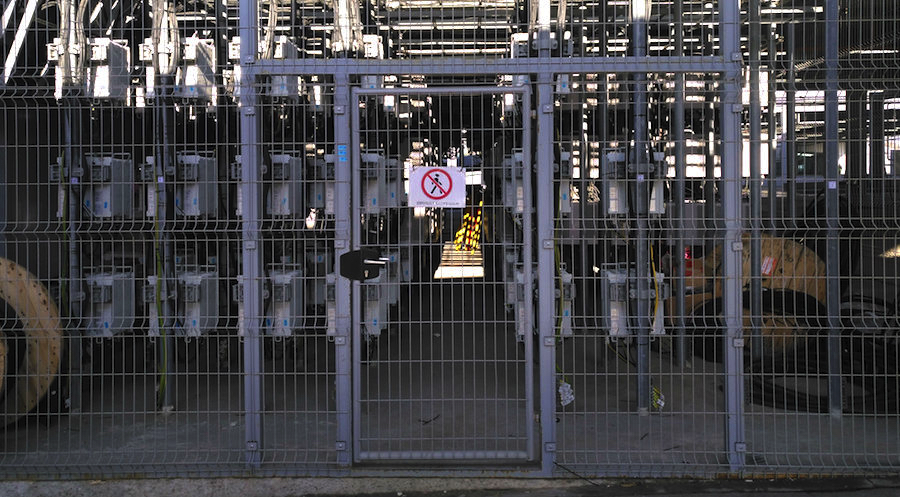
The stadium "St. Petersburg" by 2017 was erected on the site of the S.M. Kirov. The new arena is designed for 68 thousand people. There were matches last year's Confederation Cup, here scheduled seven meetings of the 2018 World Cup - including for the bronze medal.

The stadium bowl rises above the complex complex of parking lots, walk-throughs, ramps and all kinds of office space. Having gone deep into this labyrinth, we leave to the area surrounded by a grid with cellular transceivers. They take the ether signal and turn it into an optical one.
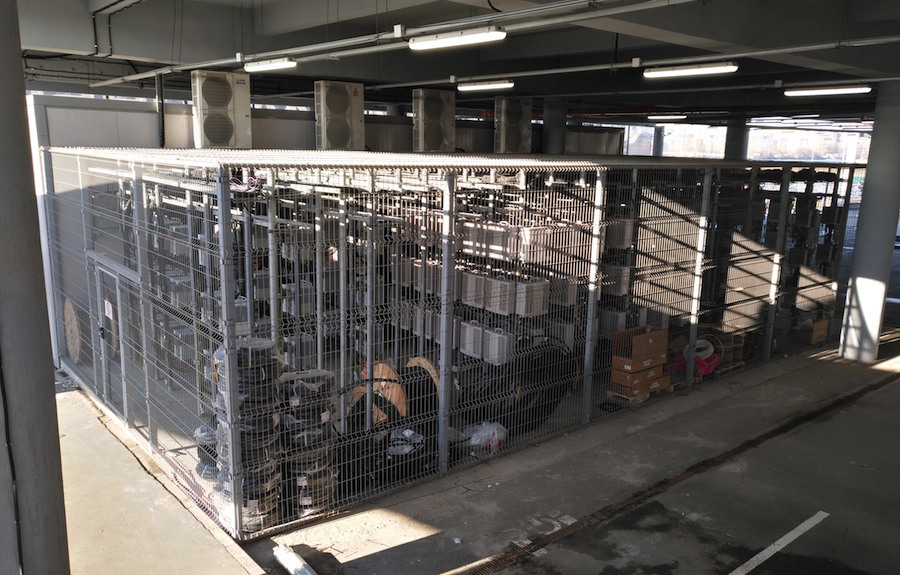
The radio module part of the infrastructure is placed outside, separately from the rest of the equipment, in order to reduce the cost of cooling it. If everything was placed in the room, we would have to additionally install a few dozen more air conditioners - these are additional electricity costs, and an increased risk of overheating the site. And so nature does everything for us.


Each operator in this zone has its own transceivers. At the construction stage, everyone agreed with each other, determined the sequence and location of the blocks. So each operator knows exactly in which zone its blocks are located. This allows you to reduce the search time during maintenance and efficiently organize the space. Here traffic is collected separately, converted and merged into a single stream for further processing. To trace this path, go to the room nearby.
Two racks accommodate over twenty 2G / 3G / 4G base stations, which are connected to transceivers. A lot of wires are connected to them, and each is necessarily signed. It is possible that the test zone 5G will be located here, but its exact location is still being specified.

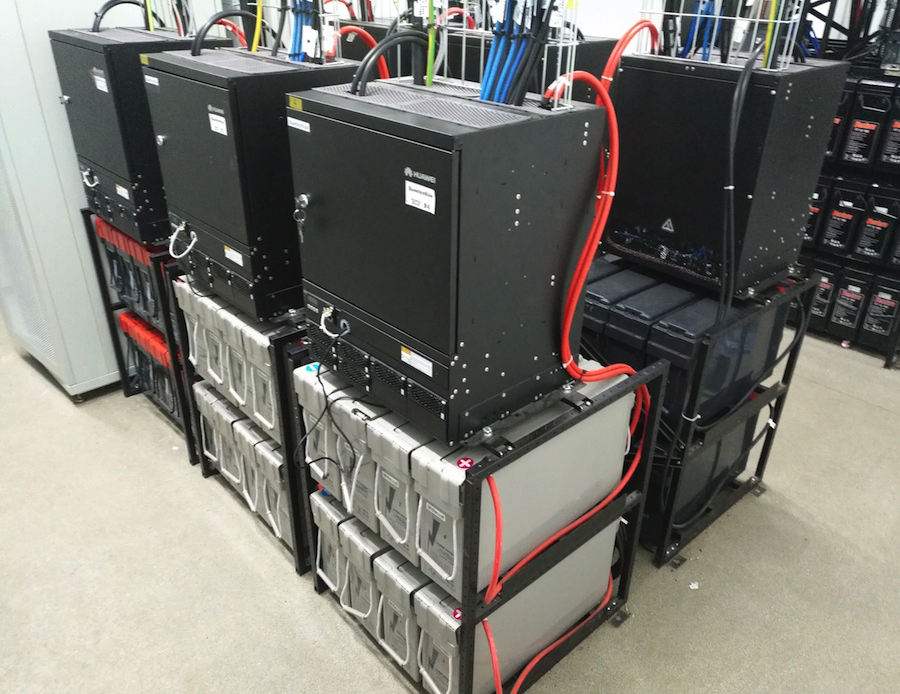
Not far away there are backup power racks and battery stocks, with which the infrastructure can autonomously work for several hours. Near installed diesel generator. In general, the power cessation at the stadium is very unlikely, since it is connected in the first category of power supply - like health care institutes, hazardous industries, fire protection systems and other very important objects.
In other cabinets, there are hardware systems for controlling an active distributed antenna system (ADAS) deployed at the stadium. Unlike simpler and cheaper passive DAS, active systems use fiber-optic signal transmission, which reduces the influence of the distance to the transmitter on the stability of the antenna signal. This makes it possible to scale the network for whole kilometers. By the way, distributed antenna systems are also used in Kaliningrad and Sochi at the stadiums "Kaliningrad" and "Fisht".
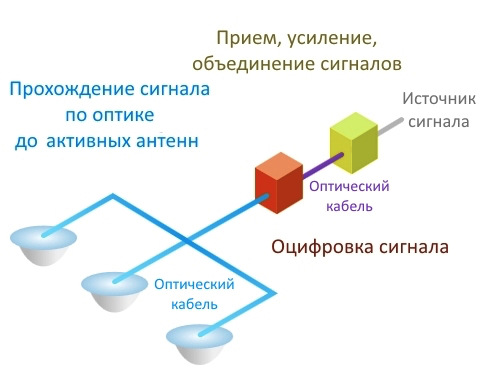 General scheme of ADAS. Source: rf-link.ru.
General scheme of ADAS. Source: rf-link.ru.Infrastructure maintenance is carried out by two teams: one at the facility, the other remotely. The first works mainly during events, and consists of engineers who know everything about the object and are able, if necessary, to easily replace each other. The rest of the time, the system is being watched from outside the stadium. This possibility is another advantage of active DAS compared to passive. At least one engineer is engaged in remote monitoring around the clock. If there are any problems anywhere, he will be able to determine the cause online and, together with the facility team, quickly fix it. Users do not even have time to notice anything.
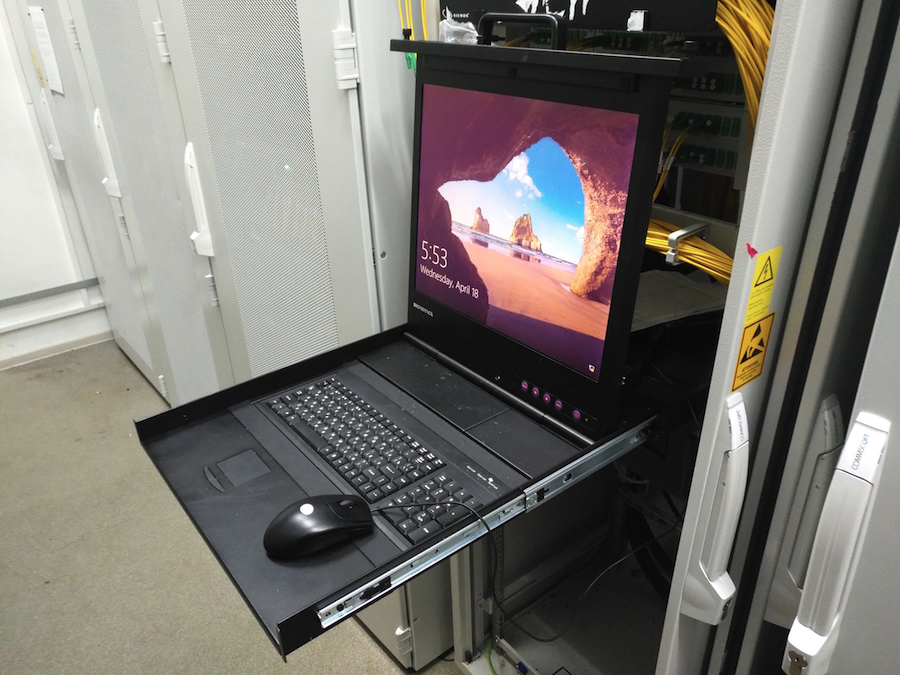 ADAS Management Console
ADAS Management Console Each operator additionally insures systems for uninterrupted power supply. This equipment is occupied by a significant part of the premises.
Each operator additionally insures systems for uninterrupted power supply. This equipment is occupied by a significant part of the premises.The network infrastructure at the stadium "St. Petersburg" is designed in such a way as to provide an opportunity for everyone to have a conversation at the stadium. At the 2018 World Cup matches, up to 68 thousand spectators can actually be here. The stock is decent, but do not forget that stadium workers also need a connection. Yes, and the load on the equipment is uneven - the traffic jumps strongly during the breaks, when fans rush to share what they took off for the time, or just to call someone and share their impressions.
For such shields hidden antenna antennas. Their capacity varies depending on which sector you need to cover, so as not to leave white spots and avoid overlapping sectors.All antennas covering the stadium and the territory nearby are divided into 8 zones. In each zone - 6-8 antennas. To minimize contact with neighboring cells, antennas redirect and adjust power. The radiation power of each antenna is designed to ensure the highest possible penetration without exceeding the sanitary norms. In everything you need to keep a balance
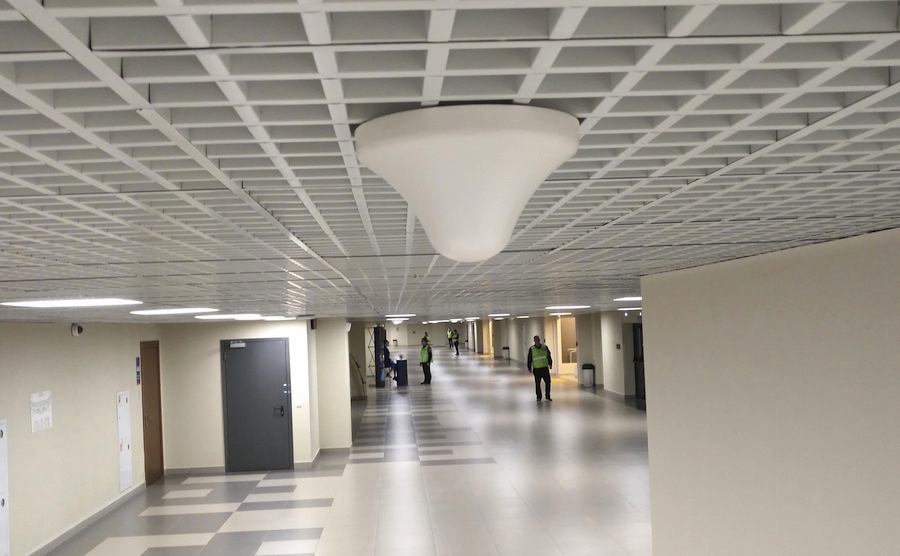 Neat, drop-shaped antennas are installed in the stadium premises.
Neat, drop-shaped antennas are installed in the stadium premises. Antennas for lower tiers are installed on massive transverse roof beams of the stadium
Antennas for lower tiers are installed on massive transverse roof beams of the stadium Above and farther from the field - antennas for the upper tiers
Above and farther from the field - antennas for the upper tiersIn order to ensure high quality of communication inside the stadium, engineers bypass it with measuring equipment. If during the on-site radio measurements, the engineers find the problem, then mark it on the stadium scheme, unload all system events that could be related to the problem, find its cause and eliminate it.
For a detailed assessment, you need to conquer a total of four thousand steps - climb the 325-storey house. When an engineer goes around every 5–10 meters, he puts dots on the stadium scheme in accordance with his position and all measured network parameters are attached to it. This is how mobile communications are monitored within the stadium.
By the way, the complex of equipment that MegaFon uses to measure the quality of communication was described in detail in the material on how to monitor the mobile network in Moscow